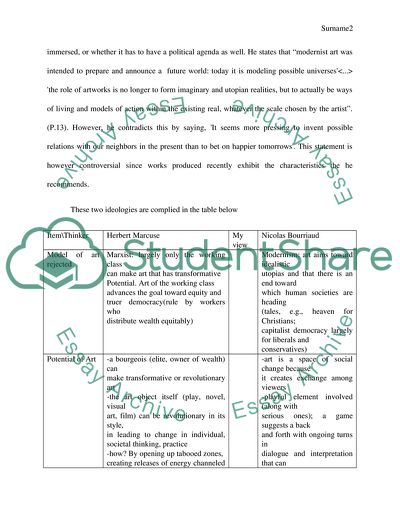Cite this document
(Art Considered as Cultural Politics in Three Thinkers Literature review Example | Topics and Well Written Essays - 1500 words, n.d.)
Art Considered as Cultural Politics in Three Thinkers Literature review Example | Topics and Well Written Essays - 1500 words. https://studentshare.org/politics/1814569-cultural-politics
Art Considered as Cultural Politics in Three Thinkers Literature review Example | Topics and Well Written Essays - 1500 words. https://studentshare.org/politics/1814569-cultural-politics
(Art Considered As Cultural Politics in Three Thinkers Literature Review Example | Topics and Well Written Essays - 1500 Words)
Art Considered As Cultural Politics in Three Thinkers Literature Review Example | Topics and Well Written Essays - 1500 Words. https://studentshare.org/politics/1814569-cultural-politics.
Art Considered As Cultural Politics in Three Thinkers Literature Review Example | Topics and Well Written Essays - 1500 Words. https://studentshare.org/politics/1814569-cultural-politics.
“Art Considered As Cultural Politics in Three Thinkers Literature Review Example | Topics and Well Written Essays - 1500 Words”. https://studentshare.org/politics/1814569-cultural-politics.


